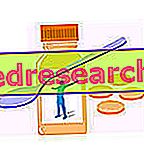Definition of the disorder
Restless Legs Syndrome (RLS) is a fairly common neurological disorder, characterized by the urgent need to move the lower limbs (and sometimes even the upper ones) to stop motor torment. Patients suffering from restless legs syndrome complain of vague, confused, rather difficult-to-define symptoms: these are continuous and restless motor movements of the legs, performed specifically by the affected subject in a desperate attempt to obtain relief from annoying tingling and numbness.

We try to investigate the topic further, explaining the most common symptoms and the possible complications of restless legs syndrome.
Symptoms
To learn more: Symptoms Restless legs syndrome
The onset of restless legs syndrome is variable. However, the disease manifests its symptoms especially during adult-youth.
RLS is a conical disease, which tends to worsen with age, both in terms of frequency and intensity. Although rare, periods of remission of symptoms are still possible.
In the vast majority of cases diagnosed, the symptoms appear during rest - especially at night - and are attenuated with movement. The patient, forced to move his lower limbs to get relief, is not able to rest peacefully because of the innumerable awakenings during sleep.
The symptoms and clinical evidence associated with restless legs syndrome can be summarized as follows:
- Absence of abnormalities in the objective neurological examination
- Nocturnal leg twitching: the movements that characterize restless legs syndrome can extend to the toes, ankles and hips.
- Involvement of a phantom limb: phantom limb syndrome is defined as the unpleasant perception of a limb that has become insensitive or the feeling of still having a limb that has been amputated
- Desire to move the lower limbs to find relief from tingling in the legs and numbness
- Motor restlessness
- Periodic movements, sometimes uncontrolled, of the musculature of the lower limbs: these movements are generally rapid, jerky or jerky, stereotyped and repetitive, and recur every 15-40 seconds.
- Perception of itching or tickling in the muscles, which cannot be appeased without movement
- Possible involvement of upper limbs
- Burning and constant itching in the legs
- More pronounced symptoms during the night and rest in general
- Flickering in the legs
- Circadian variation of symptoms: the discomfort associated with restless legs syndrome appears to be reduced at 5 am. In the most serious cases, the symptoms occur constantly throughout the day.
Complications
The intertwining of these symptoms is reflected in poor quality sleep, characterized by difficulty in falling asleep, insomnia, frequent nocturnal awakenings and tiredness during the day.
Clearly, the pressure to which a patient with restless legs syndrome is subjected can lead to serious disorders and complications, which reflect neurological conditions:
- Mood alteration
- Anxiety
- Depression
- Irritability
- Stress
Associations and future hopes
Unfortunately, restless leg syndrome often remains misdiagnosed or even unrecognized. Many patients are diagnosed with the disorder even 10-20 years after the onset of the very first symptoms: what we have said makes us understand how restless legs syndrome is still ignored by a good portion of the world population.
We must not forget that restless legs syndrome is a chronic neurological disease in all respects; therefore, it should get more attention from the medical profession. The Italian Association of RLS Patients was established in 2007 with the aim of uniting the population, raising awareness among the medical profession and promoting research in the fight against restless legs syndrome.



